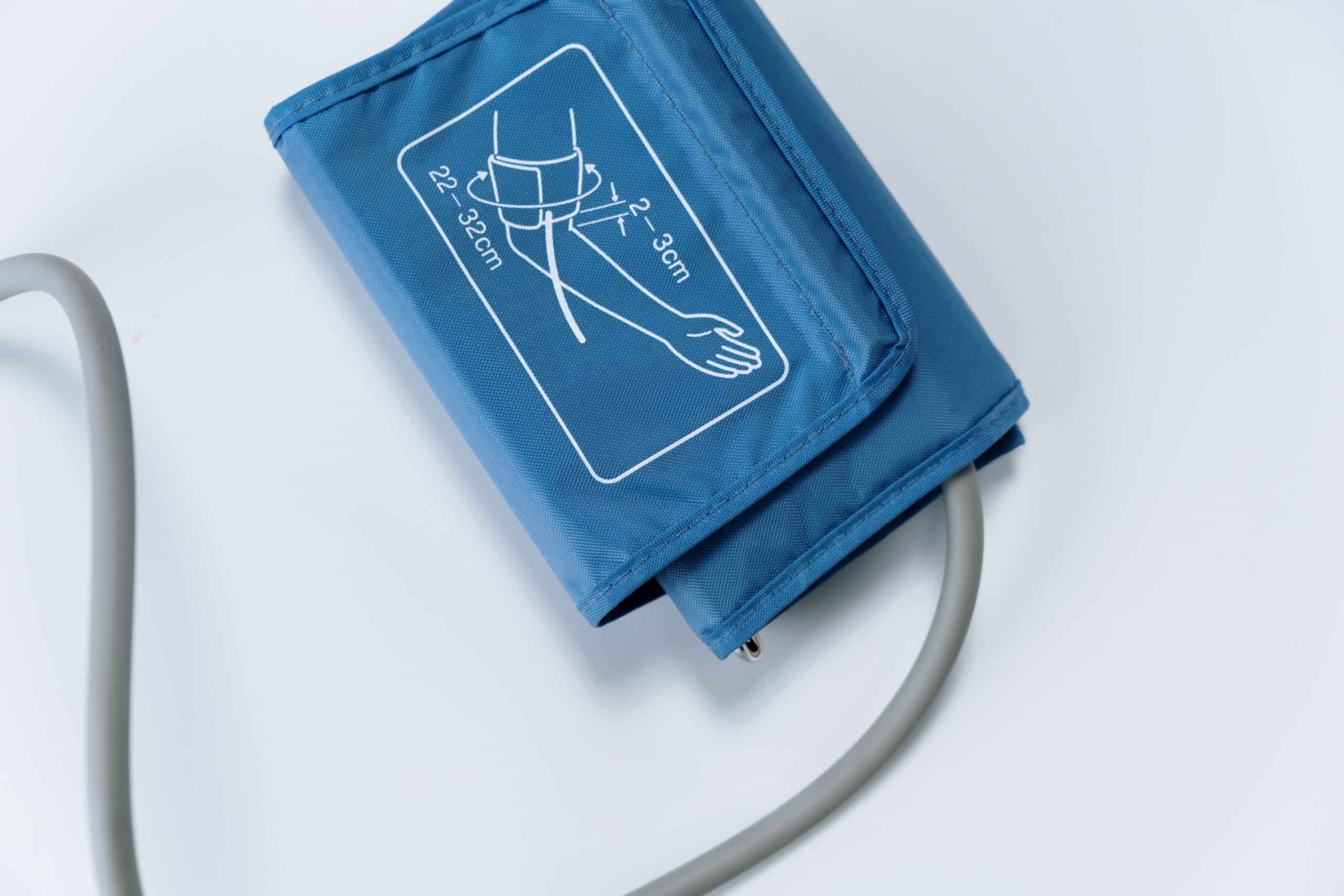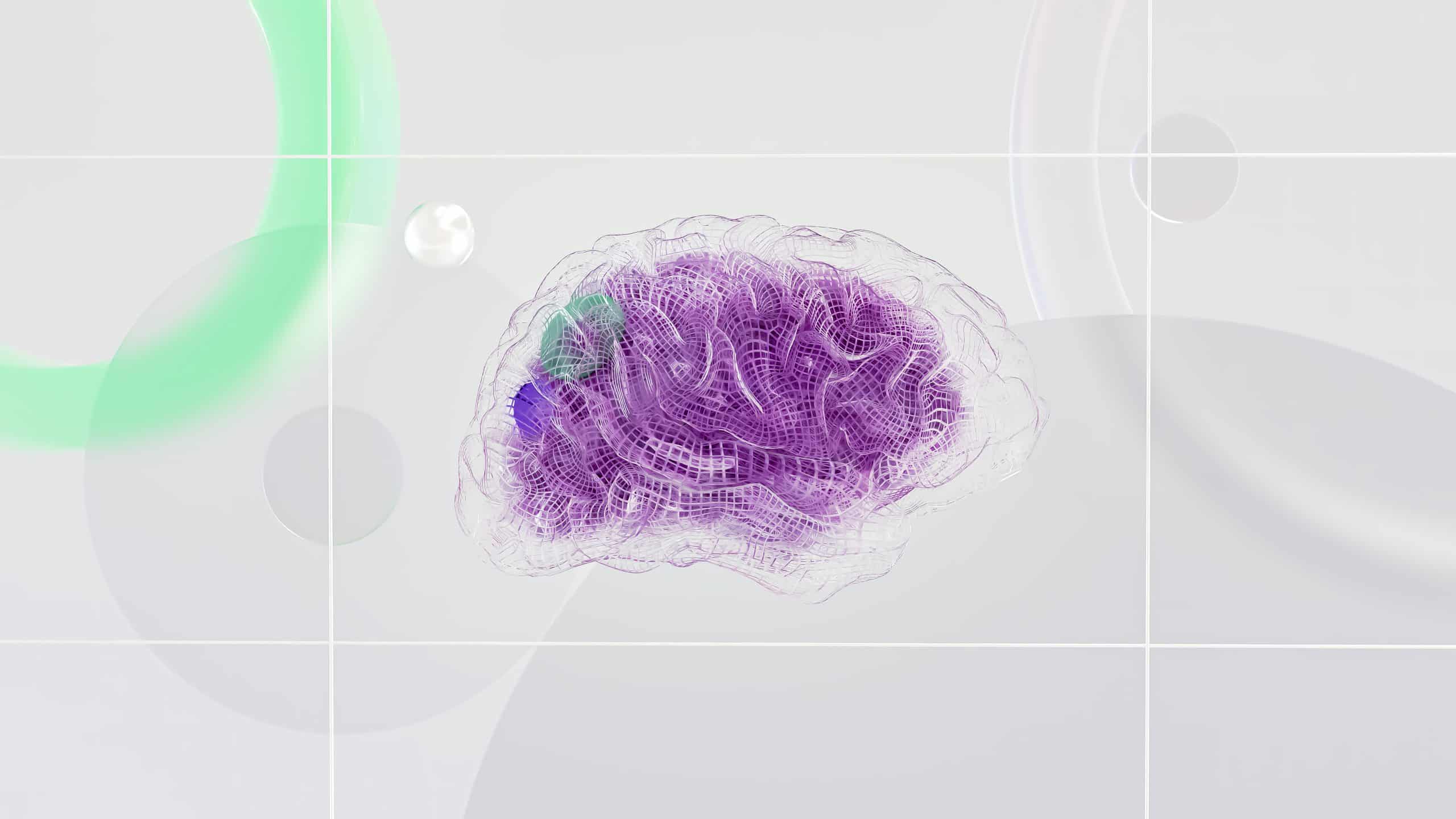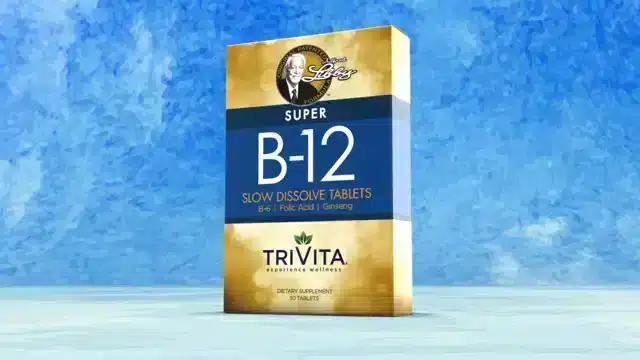Your cart is currently empty!
Blog
-

How to Get a Job… After Retirement
Once upon a time, the “retirement years” evoked images of RV travel, hobbies galore and a general life of leisure. Today, expectations are completely different for those entering “retirement age.” Recent research from the TransAmerica Center for Retirement Studies shows that a whopping 82% of those in their 60s expect to, or are already, working past age 65.1 The U.S. Bureau of Labor Statistics predicts that by 2022, the 65+ age bracket will be the fastest growing segment of the labor force.1 Why? Most cite the need for income or health benefits.2 Returning to the workforce can be daunting, especially with competition from younger generations. Although everyone’s background and skills are different, these tips can help in your search for an “encore” career.Network
It literally pays to know someone. Contact former colleagues, clients, vendors, friends and family and let them know you’re seeking employment. You never know when a lead might come up.Keep your resume short and to the point
You have a lifetime of skills and work experience, but they all don’t belong on your resume. Customize your resume for each position you apply for, highlighting the pertinent skills and experience. Limit your resume to one page, two at most.Accept all interviews
Hone your interviewing skills by agreeing to all interviews, even for jobs that you don’t really want. This helps ensure you’ll be polished and ready for the job interview that really counts.Don’t allude to age
Odds are good you’ll be interviewed by, or work for, someone younger than you. Avoid referencing age—theirs or yours. You don’t want to appear condescending or unintentionally reinforce any age bias they may harbor.Stay on top of trends
We live in an increasingly tech-driven world; keeping up with the latest developments can help you stay competitive with younger job seekers.Consider temp work
Bring in income while searching for that perfect job. For those who have been out of the workforce, it can also help you build up your resume.Volunteer
Although you most likely won’t earn a wage, volunteering is great experience to include on your resume.
References: -

How to Avoid the Acceptance Trap
By Mamiko Odegard, Ph.D. Are you ready to claim your true value without having to wait for others to like, accept, approve of and love you? Recognize the fear within you that needs the validation of your worth. What is it that is keeping you from that goal? Is it years of messages drawn from your earliest memories? Messages that you’re not good enough, not thin enough, not smart enough… even not lovable enough? It’s time to purge yourself from the agony of painful beliefs that you’ve carried all these years. Once you’ve identified your sabotaging beliefs, it’s time to formulate new ones that help you to heal and enjoy a happier and more successful life. If you find that you don’t believe these new, more supportive beliefs about yourself, then go back to your fears. Maybe you’re afraid that if you form affirming new beliefs that you are capable and worthy, you’ll be simply “fooling yourself.” Or maybe you fear being vulnerable and getting hurt. Yes, rejection does hurt. But remember, the price of pretending to be someone you’re not is high: it costs you your personal power, your well-being and your peace. You become what you think As Henry Ford said, “Whether you think you can, or think you can’t—you’re right.” It’s time to step up and be your own nurturing parent or friend. Give yourself these affirmations:“I am learning to accept and love myself more and more each day.”
“I like this about myself: ________.”
“I am taking charge of my life: my thoughts, feelings and actions.”
“As I practice self care, I am showing love to myself.”
“I surround myself with those persons who are caring, supportive and loving towards me.”
By thinking and saying these affirmations daily, you will grow in your own esteem and acceptance. You don’t have to be perfect! You just need to start now and let yourself believe in, and let yourself be, the miraculous person you really are. -

Celebrating 19 Years of Wellness!
A lot has changed in 19 years, but our appreciation for our members has not. Watch this special message from founder and CEO Michael Ellison and other TriVita employees. -

Why is Your Blood Pressure Such a Big Deal?
By Daniela Radulescu, M.D. Blood pressure matters because when it’s too high it can lead to serious health problems: heart attack, stroke, heart failure and kidney disease. That’s why statistics from the U.S., many Western nations and Australia on high blood pressure in adults are alarming—about one in three adults have high blood pressure, or have had in the past. Starting at age 65, women are much more likely to have high blood pressure (BP) than men. There’s no better time than now to understand this common problem, and learn how to manage it for optimal wellness. First, many people with high blood pressure (called “hypertension” in medical circles) have no symptoms at all. So unless they get their blood pressure checked, they have no reason to be concerned or take action. To understand why this is dangerous, we need to look at some fundamentals. Blood pressure is actually the force that the blood in our vessels exerts on the walls of our arteries. This fluctuates because the blood is not pumped continuously from the heart. When the heart pumps blood we get our highest pressure; this is called systolic BP. When the heart stops pumping blood to the vessels, BP drops; this is called diastolic BP. A blood pressure reading is expressed as, for example, 140/90 (140 systolic over 90 diastolic). Over time, excessive blood pressure can damage and weaken the arteries. BP doesn’t stay static; it varies for the same person throughout the day based on the physical or mental state. It is a complex regulation divided between the nervous and endocrine (hormone) systems and can be easily influenced by external factors like physical activity, stress and temperature. This is why the stress of a doctor visit can create “white coat hypertension”: we’re a bit nervous, so our blood pressure rises.Life affects your blood pressure
Is your work stressful? Having relationship problems, or trouble paying your bills? Any of these situations can raise blood pressure for a short time. One reading alone isn’t enough for a diagnosis of high BP, however, and that’s why every visit to your healthcare provider should include a BP check. Your provider might ask you to keep a diary of your BP readings taken at home, or return to the office periodically for BP checks.What’s normal, what’s dangerous
 While there is some disagreement in medicine about what BP reading puts you “at risk,” we can look at ranges for normal and high BP. The current recommended range for normal BP is up to 139/89 mmHG (this means millimeters of mercury; it’s how BP is measured). Generally, the medical world views readings of 140/90 and above as high BP. Readings of 180/110 are considered “very high BP,” or hypertensive emergency, and call for immediate medical attention. Usually, the higher the BP, the higher the risks for health problems.
While there is some disagreement in medicine about what BP reading puts you “at risk,” we can look at ranges for normal and high BP. The current recommended range for normal BP is up to 139/89 mmHG (this means millimeters of mercury; it’s how BP is measured). Generally, the medical world views readings of 140/90 and above as high BP. Readings of 180/110 are considered “very high BP,” or hypertensive emergency, and call for immediate medical attention. Usually, the higher the BP, the higher the risks for health problems.
What you can do
If you get a diagnosis of high BP, the first step is to make lifestyle changes. Your doctor will urge you to stop smoking if you do smoke; find ways to manage stress; control cholesterol; enjoy regular exercise; lose weight if necessary; decrease salt and alcohol intake; and manage diseases that influence BP, such as diabetes and obesity. If these steps don’t get your BP within a normal range, your doctor will discuss additional treatments that are most suited to you. Do yourself, your blood pressure and your health a favor: eat right, exercise and live all of the “10 Essentials” to experience optimal wellness.
References: 1. Health.org: Monitor Your Blood Pressure 2. Heartfoundation.org: Hypertension 3. Healthday.com: Lower Blood Pressure Reduces First Stroke Risk 4. Heart.org: Know Your Risk Factors for High Blood Pressure -

8 Ways to Make Summer Grilling Healthier
By Christa Orecchio For many of us, summer eating means outdoor cooking and lots of barbeques. Grilling is a longtime fun tradition for so many of us—but did you know there are healthy and unhealthy ways to grill? When we grill using high heat, proteins in meat and fish can get converted to something called heterocyclic amines or HCAs. These HCAs are chemicals that have been linked to tumors in animals as well as a greater risk of breast, colon, stomach and prostate cancer. What happens is the fat and juices of the meat drip onto the grill, forcing smoke to be produced that contains carcinogenic (cancer-causing) chemicals called polycyclic aromatic hydrocarbons (PAHs). Then smoke rises past the food, depositing these PAHs on the surface of the food. Not to worry: I would never ask you to give up this time-honored tradition that has connected friends, family and neighbors since grills were first invented. There are many ways to take caution for safer grilling.Outdoor cooking for safety, health
1. Avoid grilling processed meats at all costs.
Processed meats contain an entirely different set of potentially carcinogenic agents than unprocessed meats. So in my view, this means saying good-bye to hot dogs and sausages on the grill. Always grill unprocessed meats: grass-fed hamburgers or steak, organic, free-range chicken, and wild fish.2. Marinate!
Studies show that marinating food prior to grilling reduces the levels of carcinogenic compounds. Lighter, thinner marinades seem to work best, as the thicker ones with sugar burn more easily. I’ve included two of my favorites, an Italian Marinade and a Mexican Pesto Marinade, both always winners in my household and cooking classes. Both can double as salad dressings or dips for your fun summer picnics.3. Go lean.
Choose lean organic chicken and grass-fed beef or fish over fattier alternatives like ribs and sausage. There will be less drippings and therefore fewer PAHs.4. Smaller cuts of meat.
Kebabs, anyone? Choosing smaller cuts of meat that take less time to cook will limit exposure to chemicals.5. Mind the barbeque and hone your technique.
If you’re on grill duty, make sure you flip burgers every minute, keep food a good six inches from the heat source, and use cedar planks whenever possible to prevent the juices from dripping onto the grill. (Cedar plank wild salmon is delicious!)6. Go for the veggies!
 If you are a kebab type of person, try grilling fruit and veggies as well as meat or fish because they contain very little protein. So, there is no danger of conversion to the chemical HCAs that can cause harm. Having 50% of your plate as veggies is good for your health in many different ways. Grilled fruit and veggies make for fantastic salad additions when you add them to fresh, raw greens. Or just use them with dips for healthy picnic snacks or appetizers.
If you are a kebab type of person, try grilling fruit and veggies as well as meat or fish because they contain very little protein. So, there is no danger of conversion to the chemical HCAs that can cause harm. Having 50% of your plate as veggies is good for your health in many different ways. Grilled fruit and veggies make for fantastic salad additions when you add them to fresh, raw greens. Or just use them with dips for healthy picnic snacks or appetizers.
7. Ditch burnt meat.
As appealing as char-grilled may look, the charring is toxic and I always recommend cutting off burnt or charred parts.8. Check your briquettes.
If you use charcoal briquettes, go for the natural ones made from either real wood or coconut, (there won’t be any coconut flavor in your briquettes). Not all briquettes contain the same ingredients. The largest briquette manufacturer lists their ingredients publicly.
Reference: Harvard Health Publications and Brigham and Women’s Cancer Center -

Mitochondria—The Key to Human Longevity
Mitochrondria is an intimidating word that’s thrown around a lot in medical websites and journals, but how many of us really understand its importance? Mitochondria are simply the tiny factories in each of our cells that turn the food we eat and the oxygen we breathe into energy. Aging speeds up when the communication breaks down between the central part of our cells and their mitochondria. Mitochondrial deterioration produces excess free radicals (damaging molecules), which in turn can cause your body to perform like an old car engine that produces a lot of smoke and runs poorly. The good news is that you can also reverse this process. When intracellular communication improves, the aging process slows down and overall health and vitality will improve. Energy, metabolism and cognitive powers are all enhanced, and improved mitochondrial health may also help prevent a variety of age-related diseases.1 Healthy mitochondria
Every person is filled with mitochondria—there are trillions of these energy factories in each human body. Certain organs and tissue require more energy, and that’s why more mitochondria are packed in their cells. You’ll find abundant mitochondria in our hearts, brains and muscles. A stronger heart is more likely to be dense with mitochondria than a weak one.
So, if your body contains more healthy mitochondria, you’ll naturally feel better, with more energy and focus, and an increased ability to maintain high levels of activity without getting tired.
Poor mitochondria
Most of us start life with healthy mitochondria, but a number of factors can deplete or damage the supply. These include poor lifestyle habits, stress, a sedentary lifestyle, free radical damage, and exposure to infections, allergens and toxins. One of the major reasons for mitochondria depletion is a poor diet. So, unless we take care of our general health—and our mitochondria—we are more likely to feel tired and suffer from foggy brain. Mitochondrial deficits can also increase the risk for numerous ailments.2
Care and feeding
Eating a well-balanced diet and reducing stress are two keys to improved mitochondrial health. Targeted supplementation may also help reverse mitochondria depletion. Many adults are deficient in one or more important nutrients, so you might consider supplementing with a high quality multivitamin for improved mitochondrial health, especially CoQ-10.3
Experts agree, if you take care of your mitochondria your body will take care of you.
Healthy mitochondria
Every person is filled with mitochondria—there are trillions of these energy factories in each human body. Certain organs and tissue require more energy, and that’s why more mitochondria are packed in their cells. You’ll find abundant mitochondria in our hearts, brains and muscles. A stronger heart is more likely to be dense with mitochondria than a weak one.
So, if your body contains more healthy mitochondria, you’ll naturally feel better, with more energy and focus, and an increased ability to maintain high levels of activity without getting tired.
Poor mitochondria
Most of us start life with healthy mitochondria, but a number of factors can deplete or damage the supply. These include poor lifestyle habits, stress, a sedentary lifestyle, free radical damage, and exposure to infections, allergens and toxins. One of the major reasons for mitochondria depletion is a poor diet. So, unless we take care of our general health—and our mitochondria—we are more likely to feel tired and suffer from foggy brain. Mitochondrial deficits can also increase the risk for numerous ailments.2
Care and feeding
Eating a well-balanced diet and reducing stress are two keys to improved mitochondrial health. Targeted supplementation may also help reverse mitochondria depletion. Many adults are deficient in one or more important nutrients, so you might consider supplementing with a high quality multivitamin for improved mitochondrial health, especially CoQ-10.3
Experts agree, if you take care of your mitochondria your body will take care of you.
References:- http://ghr.nlm.nih.gov/handbook/mutationsanddisorders?show=all
- Mitochondria and human evolution. Biochemical functions of coenzyme Q10. Journal of the American College of Nutrition. December 20, 2001.
- http://www.ncbi.nlm.nih.gov/pmc/articles/PMC21173/
-

Spiritual health: Are You Getting The Whole Picture?
By Chaplain Donna Kafer “For you created my inmost being; you knit me together in my mother’s womb. I praise you because I am fearfully and wonderfully made; your works are wonderful, I know that full well.” ~ Psalm 139:13-14 When it comes to caring for our physical, mental and emotional well-being, we’re usually pretty good about it. Concerning our spiritual health, though, we’re often found lacking. In our excitement over new-found opportunities for wellness, we’ll read with interest TriVita’s 10 Essentials, but as we consider the spiritual aspect, we may simply skim over it. What we don’t realize is when we discount the spiritual component of our health, we’re missing out on the complete picture of wellness, doing ourselves a great disservice. It’s a bit like strength training half of our body. Can you imagine how we’d look after several months of building up one side while neglecting the other? I’m sure we would be very displeased by the outcome and begin wondering how long it would take to get the other side up to par. Get the picture? To not take into account all of our well-being is a skewed view of who we are as people. Each area is vital to the wholeness and health we all want to have and experience. When we talk about conservation of the planet, don’t we talk about all areas of the world? The air, the land, the vegetation, animals, water and of course people. We wouldn’t think of not including all of our precious resources of Earth, so why would we do so with our complex lives? Is there a definition of spiritual wellness? I believe the definition is comprehending the power, influence and connectivity with the God of the universe. To recognize the Creator who so intricately designed and formed us. A God who cares infinitely more for us than we may ever truly realize. A personal Creator who loves us, who knows us not only by name, but by each of our thoughts, fears and dreams. He and He alone can develop our spiritual strength and well-being, building us up in our faith in Him. To recognize His godly grace and presence is a gift, one that will sustain us through many trials and difficulties in life. Remember, TriVita has 10 Essentials, not nine, so embrace all of them for optimal wellness. By doing so you’ll be able to experience all that God has purposed and planned for your life. -

Seven Secrets to Turbocharge Your brain
By Sandra Bond Chapman, Ph.D. The brain is the most powerful, most staggeringly complex electro-biochemical machine ever created. Above and behind our eyes are 100 billion neurons in a small calcium shell, laced with organic pumps, channels and switches. Until recently, this complicated organ was thought to be static and unchangeable. Far from it. The latest cognitive neuroscience research reveals key ways to improve brain health in people of all ages and stages. These discoveries are incredibly timely—now, more than ever. I recently had the honor of presenting some of my latest research at a TEDx event. TED is a nonprofit, nonpartisan organization devoted to spreading big ideas—from science to business to global issues—that deepen our understanding of the world around us.Look inward to the “final frontier”
In my talk, I encourage people to turn their focus inward. Truly, some of the most fascinating scientific discoveries today have to do with the world within us: our brains. With all due respect to “Star Trek,” outer space is not the only “final frontier.” Understanding and maximizing the potential of the human brain is also an important, and still largely uncharted, frontier of discovery. I’ve developed seven scientifically-validated secrets anyone can implement to improve brain performance. They’re based on my 30+ year career in brain science and work at the Center for BrainHealth, which I founded at the University of Texas/Dallas. You might be surprised at how much of the “7 Secrets” advice is counter to how people live and work. They are secrets because they challenge conventional wisdom and today’s societal pressures. In truth, the frenetic, distracted way we live in the 21st century is not conducive to good brain health or performance. While the descriptions here are tailored to working-age adults, “7-Secret Thinking” is also highly beneficial to others. Teens growing up in poverty, healthy older adults and those experiencing cognitive decline, and those who have sustained a traumatic brain injury are all benefiting by engaging in 7-Secret Thinking. Here’s one thing I know without a doubt: The majority of people have the chance to achieve better brain health. Put your brain health up front and center focus. Without brain health, we do not have health at all.Secret 1: Start single-tasking
For those who proudly call themselves multi-taskers, understand that your brain is not built to perform two tasks at the same time—instead, it must switch quickly from task to unrelated task. Multi-tasking tires the brain and activates stress hormones. Giving your full attention to the project at hand will increase accuracy, innovation and speed.Secret 2: Limit information
Thanks to our technology-driven and super-connected world, the sheer volume of information we are exposed to every day is nearly 200 times more than we were exposed to 20 years ago! Research shows this information overload comes at a price. High-performing minds are more efficient at knowing what to block out and what to keenly pay attention to. Limit what you take in to enhance your brain’s natural ability to block out what does not matter.Secret 3: Detox distractions
On average, individuals work for three minutes at a time before being interrupted. Complicating matters, technology is actually rewiring our brains to be addicted to interruption, as we anxiously wait for the next ping signaling a new email, text or social media post. By silencing your phone and computer and closing your office door, you can actually accelerate your brain’s ability to complete tasks.Secret 4: Think big
Designed to shift between details and the big picture, the brain is overwhelmed by too much focus on details and minutiae. Taking the time to think about a problem or idea from the 10,000-foot view will shift your perspective and strengthen brain systems to generate high-level ideas and transformative solutions. Our research has shown that doing so strengthens brain systems at multiple levels of health.Secret 5: Calibrate mental effort
Mental energy, like physical energy, can be depleted. Prioritize your day by focusing effort on the most important tasks while your brain is at peak operating power, usually at the beginning of the day.Secret 6: Innovate
Stepping outside your routine is important to brain health and performance. Our brains seek novelty and innovation, so challenge yourself to expand your knowledge and learn new skills.Secret 7: Motivate
While it is important to learn new skills, the brain is happiest when exploring areas you are passionate about. Focusing on what motivates and matters to you actually increases your rate of learning. This article is intended for educational purposes only.
References: http://journal.frontiersin.org/article/10.3389/fnsys.2014.00069/abstract https://www.youtube.com/watch?v=uUL5o-1Yawo -

5 Vitamins You May Be Missing After 40
As we age, the single most beneficial thing we can do for our health is to eat a balanced diet. It is important to choose foods that nourish bones and muscles, support a healthy heart and brain while avoiding an unbalanced diet that will rob you of your vitality. A nutritious diet should include a wide variety of fruits and vegetables, whole grains and legumes, nuts, seeds, healthy fats and proteins. If you often find yourself reaching for premade or packaged meals, fast-food takeout or other sources of empty calories, you may be lacking essential vitamins in your diet that contribute to premature aging, accelerate bone and muscle loss, increase the risk of cardiovascular disease and promote weight gain. Below, are five essential nutrients to help you maintain optimal health after 40.Vitamin D
Over the last decade, the use of vitamin D supplements has increased substantially. Research has shown that getting enough of this vitamin can help prevent musculoskeletal decline, fight depression and lower your risk of dementia. If you live in a cold climate or don’t spend much time outdoors, chances are you do not get enough vitamin D from the sun, but there are other factors at play; Harvard Health says that as we grow older, our bodies become less efficient at producing vitamin D. Spending more time outdoors can help optimize your vitamin D levels, but it is also important to eat foods fortified with vitamin D such as fortified milks and cereals as well as fatty fish. If you struggle to get the recommended 600 IU daily from sunlight and diet alone, take a vitamin D3 supplement.Vitamin B12
Vitamin B12 is required for red blood cell formation, neurological function and a healthy nervous system. If you are vegan, have a gastrointestinal disorder, pernicious anemia or over the age of 40 you’ve probably been told that you have a higher risk of vitamin B12 deficiency. Getting enough vitamin B12 after 40 can help support heart health, enhance energy and boost mood and keep your brain healthy. Strive to get 2.4 mcg of vitamin B12 per day from whole foods and supplements.Omega-3s
While omega-3s are not a vitamin, they deserve mention. Omega-3 fatty acids are essential fats because the body cannot produce them on its own. Most North Americans take in far more omega-6 fats than omega-3 fats, which scientists suggest could pose certain health risks. The omega-3s are essential especially as you age. Research has shown they can help maintain a healthy heart, fight inflammation and support healthy brain development and function. Foods high in omega-3s include fatty fish, walnuts and flaxseeds. If you can’t get 250-500 mg of omega-3s per day from your diet, supplementing is a wise choice.Magnesium
The risk of developing cardiovascular diseases increases after the age 40, and getting enough magnesium may help lower your risk of developing these diseases. In one study, researchers found that individuals who supplemented with 368 mg of magnesium daily, for three months reduced their blood pressure by 1.8mm Hg. Maintaining healthy blood pressure can help prevent heart attacks, stroke and reduce the risk of kidney failure. Despite the importance of magnesium, nearly half of the US population consumes less than the required amount from food. To meet the daily recommended intake, include magnesium-rich foods such as spinach, almonds and dark chocolate in your diet, and consider adding a high-quality supplement.Potassium
Potassium is the third most abundant mineral in the body and is vital for improving health and maintaining a healthy lifestyle. Consuming adequate amounts of this nutrient helps protect against high blood pressure, cardiovascular disease, bone loss and may reduce the risk of kidney stones. According to research, high intake of potassium among postmenopausal women can bolster bone density and prevent osteoporosis. Experts recommend 4,700 mg of dietary potassium per day for adults, but the average intake among men and women is far less. Eat fresh and minimally processed foods, and include a daily supplement to meet your daily intake. A healthful, well-balanced diet that is rich in vitamins, minerals and nutrients is one of TriVita’s Essentials for Health and Wellness; however many older adults may have a difficult time sticking to a healthy diet due to reduced appetite, difficulty chewing or limited access to affordable healthy foods. Whole foods should serve as the primary source for nutrients; you might also consider supplements when necessary to fill in any gaps in your diet. -

Muscle Loss Linked to Chronic Inflammation
Many physiological changes occur with aging, and recent research shows that sarcopenia and loss of overall muscle strength can be added to the list of health concerns associated with unaddressed inflammation. Recent research shows that age-related chronic low-grade inflammation is a contributing factor to sarcopenia and affects both the breakdown and synthesis of muscle. Older people who suffer from sarcopenia are more likely to have high blood levels of the inflammatory markers such as CRP, SED rate and adipoenctin.What is Sarcopenia?
Sarcopenia is the age-related loss of muscle mass, strength and function that generally appears after the age of 40 and accelerates after the age of 75. It is estimated that between 25 and 50 percent of North Americans over the age of 65 suffer from sarcopenia that is significant enough to limit their daily activities. Age-related loss of muscle strength robs older adults of their independence and heightens their risk of experiencing devastating injuries and possibly death from sudden falls and other accidents. While mostly observed in physically inactive adults, sarcopenia is also seen in older adults that remain physically active throughout their lives. Regularly engaging in physical activity is essential to avoiding sarcopenia, but inactivity isn’t the only contributing factor. Sarcopenia is a multifaceted disease that may result due to inflammation, nutritional imbalances and lack of resistance training, neurological decline and mitochondrial decline.Prevent and Slow Muscle Loss
Scientists are working to understand the causes of sarcopenia; however, most interventions have focused on improving muscle strength and nutrition. Exercise provides some stimulus and benefits, but during times of bed rest, such as after surgery or injury, mobility may be severely limited. One study set out to determine if supplementation with essential amino acids (EAA) could offset muscle loss experienced during prolonged inactivity. During the 28-day trial, researchers observed lean leg mass was maintained in the experimental group. The group also retained more muscle strength than the control group. Researchers determined, “supplementation may represent a viable intervention for individuals at risk of sarcopenia due to immobility or prolonged bed rest.” Your lifestyle plays a significant role in building strong muscle as you age. Many people assume they can add more protein to their diets to make up for lost muscle mass, but that may not be enough. The role of protein in food is not to provide our bodies with proteins directly, but to supply the amino acids from which the body can make its own proteins. When we eat foods that supply each essential amino acid in adequate amounts, our body supports protein synthesis.Check Your Inflammation
Inflammation is the immune system’s response to damage and helps fight infection and heal injuries. However, inflammation, like stress, is meant to be an acute process in the body, designed to serve a purpose, then resolve. When it becomes chronic, it depletes the body’s resources and causes deep damage to tissues and organ systems. A simple blood test is used to measure C – reactive protein (CRP) in the body. The CRP test isn’t site-specific, so it shows the overall level of inflammation and a low level of CRP doesn’t necessarily mean there is no inflammation present.
There are simple steps you can take to help support healthy inflammation. Aim to avoid pro-inflammatory foods and choose high-quality vegetables rich in antioxidants, healthy fats and drink enough water. Other healthy lifestyle choices include managing stress and maintaining healthy body weight.
A simple blood test is used to measure C – reactive protein (CRP) in the body. The CRP test isn’t site-specific, so it shows the overall level of inflammation and a low level of CRP doesn’t necessarily mean there is no inflammation present.
There are simple steps you can take to help support healthy inflammation. Aim to avoid pro-inflammatory foods and choose high-quality vegetables rich in antioxidants, healthy fats and drink enough water. Other healthy lifestyle choices include managing stress and maintaining healthy body weight.
Use It or Lose It
Adopting a regular exercise program is another way to slow down the loss of strength and coordination. Any type of exercise is better than none; however, resistance training (using weights, machines or bands) is critical for those looking to preserve or increase muscle strength and mass. Regular exercise that includes strength training promotes mobility, overall fitness and improves bone health as well. New research published in the journal Brain, Behavior and Immunity, reported that a 20-minute session of moderate exercise could have anti-inflammatory effects. Suzi Hong, Ph.D., one of the studies researchers says, “Our study found one session of about twenty minutes of moderate exercise resulted in a 5 percent decrease in the number of stimulated immune cells producing TNF.” The primary role of TNF, which is a type of protein that is involved in systemic inflammation, is to regulate immune cells. By adopting a healthy lifestyle that includes balanced dietary modifications, nutritional supplements and regular physical exercise, it is possible to support healthy inflammation response in the body and preserve muscle strength at any age! -

Member Spotlight – Marie de Haan
Blessed Beyond Measure
“God put all the right people in my life at the right time. It was incredible!” Marie de Haan grew up in Skagit County, Washington and loves the area. It has everything from the ocean to the desert and beautiful mountains for hiking. “My husband and I bought a fixer upper 20 years ago and committed never to leave,” Marie says. In 1999, Marie was one of TriVita’s first members joining shortly after the company was founded. She is a songwriter, piano teacher, wife and mother of three, avid gardener, author and cancer survivor. Nine years ago, Marie went to her doctor for a routine exam and learned that she had Stage III breast cancer. “I felt healthy, and this came out of nowhere. I slept great and had good energy. I just had this little lump that I thought was a cyst. They didn’t come out and tell me how long I had, but when a naturopath tells you to do chemotherapy because they cannot help you fast enough you know it’s bad.” After her diagnosis, Marie faced a flurry of appointments, tests and treatments. She endured a year of intensive chemotherapy and surgery. She explains, “Every year after you are worried it’s going to come back, but it hasn’t. Then you experience survivor’s guilt, and it’s a very eerie feeling.” One of the ways that Marie gives back and supports others dealing with cancer is by writing. She has authored two books about her experiences and also has her blog on cancer is a funny thing.com. “I always knew I wanted to write a book, I just always thought it would be a children’s book, but God had other plans! I don’t write books to be a bestseller and make money. I get phone calls from people that read my books and my blog and felt hopeful again, and that is why I do it.” Cancer is a Funny Thing: A Humorous Look at the Bright Side of Cancer… And There is One was her first book and her follow-up memoir, Cancer is a Funny Thing: Reconstructing My Life, was published last year, in which she touches on the most sensitive subjects with grace and humor. “The reason I say ‘cancer is a funny thing’ is that sometimes it can be a blessing. People were coming out of the woodwork to help and show support. It’s a lesson for all of us. If you know someone that is going through cancer or something difficult, just be there for them in any way you can.” When Marie thinks about the role her community played during her treatment and recovery, she recalls, “My family and friends are everything. I’ve had such a great support system, and not everyone has that. I know how lucky I am. People that I didn’t even know were helping my family when we needed it the most. God put all the right people in my life at the right time. It was incredible!” For Marie, her cancer diagnosis came out of left field. Since her first visit with a naturopath at age 14, she’s been serious about living a balanced lifestyle. “When I discovered Slow Dissolve B12 it changed my life. When you take it you don’t feel hyper; it’s when you stop taking it that you notice you don’t have as much energy. I was really happy to find that, and I still take it after all these years. It’s great for stress too, and cancer is definitely stressful!” In addition to Slow Dissolve B12, Marie’s favorites are Zamu Protect, Joint Complex, VitaCal-MagD K2 and GlucoManage. Of these products Marie says, “I take others as well, but I can’t be without these!” However, healthy living isn’t just about taking the right supplements; it’s about making better choices. “Make small changes one at a time. Get more sleep, drink more water, exercise more and take your vitamins. That’s why I like TriVita’s Essentials for Health and Wellness; it’s about common sense. You don’t need to complicate your health!” Through her difficult journey, Marie discovered her purpose to help and inspire others. “I feel strongly that God has a reason. You wake up every day; you put your feet on the floor, do nice things for other people and let them know that there is hope. You just do every day the best you can. I don’t have everything in control, but thank goodness God does.” -

Secrets to Extending Your Quality of Life
One of the fascinating studies I did recently was on extending quality of life. I decided to research centenarians and get their advice. Anyone who is living past 100 and can get in front of a camera to describe how to live life with enjoyment and health is worth listening to. As one lady who is 103 years old described it, “People think money is what makes you happy….oh no, it is attitude. Keep your attitude up, up, up!! ”
By the way she described her life she must have found the TriVita Essentials at an early age! Attitude with gratitude is probably some of the best advice I received in my research. Here are 5 great tips for extending quality of life to embrace at any age.
-
- Have a purpose in life that is interesting, enjoyable and engages people and your mind! This is common amongst many of those who live long lives that are still full of zest and vibrancy even past 100. Today, leading healthcare physicians are encouraging people to embrace purpose for their lives to live with greater wellness and quality of life.
- Stay positive in the bad times and good times. Yes, keep your attitude up, up, up! Life gives us opportunities to respond or react. If we react to avoid failure rather than to enjoy success, your life will be lived trying to avoid failure and the real potential of your talents, gifts and purpose will be diminished. As one centenarian said, “Even the five years of World War, it was an adventure even amongst the bombs!” Positivity will add life to your years and years to your life!
- Keep physically active was a common theme throughout their lives. Find ways to enjoy physical activity from yoga, golfing, walking, hiking, swimming, tennis, dancing, gardening and the list goes on. Many people don’t like the idea of exercising as it denotes as not being fun. Find activities you enjoy that keep you moving!
- Remain socially engaged as frequently as possible. Most centenarians loved people all through life and being with people is a must for them. Don’t shut yourself off from people, love people! Even in an age of technology many people today are lonely. In fact, Harvard Medical recently reported that loneliness is the number one health risk now in corporate America! Friends on Facebook will not substitute for real friends in communities of worship, activities, volunteer work and most valued are the family members! Find a reason to engage socially at any age.
- Develop a relationship with God and His creation. I personally enjoyed the added dimension from the centenarians’ perspective of developing a relationship with God going beyond meditation and prayer which was in His creation. I have always loved the outdoors since I was a very young boy. Today that love is expressed even as I see a flower, I will see God in it; when I look at the beauty in a butterfly, I will see God in it. The rivers, meadows and mountains are all ways of reminding me of the wonderful Creator and His love for me. Look for new ways to engage in your relationship with God!
At TriVita, we are always searching for new insight for quality of life. Wellness and purpose go together like hand and glove. Our purpose is to help you experience greater wellness!
-
-

A New Mindset for Aging Well
I am sure all of us experienced a time in our lives when our attitude was really an anti-attitude towards the effects of aging. Not aging itself, as the only alternative to aging is dying. It reminds me of the Kenny Chesney song, “everybody wants to go to heaven, but nobody wants to go now.”
My wife and I wanted to defy the effects of aging and with a pretty intense reaction to the reminders of aging. When my wife got her AARP card in the mail reminding her that she just turned 50 years old and all the benefits of membership, she had a defiant card burning ceremony! Now we smile when we look in the mirror or get those reminders in the mail of our age and realize, we are not anti-agers; we are healthy-agers embracing aging but with goals of extending our quality of life! We and millions of others have entered a healthier mindset of the aging process!
Today there are over 108 million people in the USA that are 50 years of age or older. The 65 years of age population explosion is expected to grow from 50.8 million as of 2018 to 70.4 million people in just twelve years. It is this group that is motivating our desire for a healthier way to age.
The National Council of Aging (NCOA) reported that 80% of adults aged 65 and older have at least one chronic condition; 68% have two or more according to 2015 data from the Centers for Medicare and Medicaid Services. I will not list the conditions but make note that the majority of the conditions are as a result of lifestyle choices! This is excellent news because, as I have said before, if lifestyle choices can make us ill, they can make us well.
With a mindset of healthy aging now at the center of so many people’s thoughts, there are shared values that are very important like independence, freedom and a healthy mind. Autonomy and freedom translate to a lifestyle that maintains mobility and self-reliance. Healthy aging is not so much about longevity but really about extending quality of life. As I have always said, a long life in diapers without the ability to respond to purpose in life is not my idea of a life worth living. It is inevitable we will all age but how we age has a lot to do with the choices we make today.
This is why at TriVita we are moving towards helping our Members understand how best to support their body systems and organs so they can make informed choices for healthy aging and the quality of life that goes with it. We have hero products with additional companion products so our members can make the decisions right for them in supporting their health goals.

Maintaining mobility throughout the aging process strengthens independence and self–reliance, and the musculoskeletal system needs proper nutrients and nurturing activities to remain strong at any age. MyoHealth is a powerful muscle and bone building formula with the nine essential amino acids developed by Dr. Robert Wolfe with over 20 million dollars of National Institute of Health and other institutional funding and with 25 human studies. Now the healthy-agers do not have to accept the accelerated muscle atrophy that causes so much human despair.
Another example of healthy aging is supporting good brain health. Until recently, the attitude about brain health was you either had a good memory, focus and function or you didn’t. A healthy brain has always been separated from lifestyle choices. But now thanks to research and especially Dale Bredesen MD, and other leading medical researchers, we know that diet, physical and mental activity along with targeted nutrition can help support a healthy brain. This is inspiring news for those of us who want to have extended quality of life. It is also why we developed NeuroShine for a better and brighter mind!
Today the healthy aging movement is looking beyond the wrinkles, the thickness of hair, and waistline, to see the whole-person wellness opportunity living with quality of life through the aging process. As I like to say, wellness is having the vitality and energy to do the things you love and need to do; having daily positive emotions of love, forgiveness, gratitude and acceptance; and developing a relationship with God knowing His purpose for your life.
Healthy aging is possible through proper lifestyle choices, and is most appealing when we look at it through the lens of whole-person wellness!
-

Exercise for Energy: Fight Fatigue and Pump Up Your Health
Energy boosting workouts that anyone can do, anytime!
You might be surprised to learn that one of the best antidotes for fatigue is to exercise more, not less! Experts say, when it comes to fighting fatigue, just getting up and walking around will increase energy. But all exercise isn’t not created equal. A study published in a 2008 issue of Psychotherapy and Psychosomatics, University of Georgia researchers found that inactive individuals who routinely complained of fatigue could increase energy by 20% while decreasing fatigue by as much as 65% simply by participating in regular, low-intensity exercise.1 Varying levels of intensity will yield different effects on your energy levels. For example, high-intensity exercise might consist of heavy weight lifting, 45 minutes on the treadmill, etc., while a 15-minute walk would be considered moderate exercise. The intensity of your workout will affect your energy levels. “A lot of times when people are fatigued, the last thing they want to do is exercise,” says researcher Patrick O’Connor, PhD.” But if you’re physically inactive and fatigued, being just a bit more active will help.” When exercising for energy, behavioral therapist and personal trainer Therese Pasqualoni, PhD, says, “You should always aim to exercise in your low to moderate training heart rate range. This will prevent you from depleting your body, and help you avoid feeling fatigued, which would otherwise prevent you from getting the maximum energy benefits.” Before you begin, it’s important to understand your body and be realistic about potential limitations to avoid injury. What’s moderate for some may be too intense for others. Walking is generally a well-tolerated option for most individuals. In addition to walking, other forms of low-impact exercise that help increase energy are yoga, Pilates, swimming and Tai Chi.Need All-Day Energy?
Regardless of your activity level, you can naturally increase your energy and improve performance by drinking water. Dehydration is a common cause of fatigue, so it’s important to stay adequately hydrated. This is especially important if you are incorporating exercise into your day. Always drink pure water before, during and after working out to help decrease workout-related fatigue. If you need energy now, you can turn to certain dietary supplements for a boost. Always look for supplements that support natural energy processes, and skip artificial energy drink and sugar-laden power bars.
References: 1. https://www.karger.com/Article/Abstract/116610 -

New Wellness Poster Boy and Girl for TriVita!
I thought I was the poster boy of TriVita, but I step down (temporarily) to Harry at age 93 along with his wife Marvis at age 92. They are the new TriVita wellness poster boy and girl living with wellness!!
It is always a highlight of any day to receive a wellness testimony from a TriVita member like the one from Harry and Marvis. This is the experience we live for every day; the joy of wellness in our lives and the lives of our members!
Living with the abundance expressed through the Essentials for Health and Wellness jumps off of the page of their letter. Read their inspiring story of a life lived with freedom, independence and wellness!
This is our wellness story to inspire others to use your vitamins.
We have trusted TriVita since 2001. Harry and I are on no medications. Harry will be 94, October 15th and I am 92, as of April 1st this year.
We were featured on the front page of the TriVita magazine with our story inside along with pictures a while back.
We do TV commercials and modeling. We ran big yachts and ferried airplanes and now big RVs all over the USA.
We have been everywhere in our own RV, including Alaska. Our map on the outside of our motorhome is full.
Last summer, we left for Seattle to see our grandchildren in June, drove over 11,000 miles, stopping to see friends and family along the way, and didn’t return home until December 6th. It was a wonderful trip.
We dance a lot and enjoy life. I’m sure we wouldn’t be able to do all those things, if it wasn’t for taking TriVita all these years.
Thank you for our healthy life!
Harry and Marvis Long

Gratitude is an attitude that enhances wellness. I think this letter exudes gratitude, and I am grateful to Harry and Marvis for sharing their life, journey and wellness experiences to inspire all of us to the possibilities of greater wellness at any age. I believe in the awesome design of our body by our CREATOR when given the right nutrients and nurturing; it has the healing power within to enhance our wellness.
If you have wellness goals, call TriVita CARE at 1-800-991-7116 and share your goals and we will share our best steps towards helping accomplish those goals.
If you have a wellness story you would like for me to share to inspire others, write me at CEO@Trivita.com.
Pursue wellness with passion!!
-

The CoQ-10 and Statin Connection
Cholesterol-lowering medications can deplete your body of this vital nutrient If you are like one of the millions of people taking a statin drug, there’s some important information you should know: Statins are known to reduce levels of CoEnzyme Q-10 (CoQ-10), a nutrient that helps fuel your entire body. CoEnzyme Q-10 is a fat-soluble, vitamin-like substance found throughout the body with the highest concentrations in the heart, liver, kidneys and pancreas. At its most basic level, CoQ-10 keeps you healthy, active and alive. CoEnzyme Q-10 is required for mitochondrial adenosine triphosphate (ATP) synthesis and functions as an antioxidant. Most of the cellular functions performed by your body are dependent on adequate ATP, the form of energy used by cells.1 As you age, tissue levels of CoEnzyme Q-10 decline, this is exacerbated by the use of certain medications including cholesterol-lowering statins.2 Without enough of this energy-producing coenzyme, your body systems may struggle to perform its role of balancing electrons, producing energy and fighting off free radicals.3Can CoEnzymeQ-10 Offset Statin Side Effects?
One of the most common side effects of statins is muscle pain and cramping, known as myalgias, or muscle-related symptoms. The pain may be a mild soreness, weakness or tiredness in your muscles. Studies have shown that up to 29% of people that start taking statins report muscle pain and consider discontinuing treatment with the drug.4 Muscle soreness or weakness can seriously affect your mobility, stability and overall quality of life. CoQ10 can help alleviate muscle pain and joint pain brought on by statin use, according to a study published in the American Journal of Cardiology. The study found, “Coenzyme Q10 supplementation may decrease muscle pain associated with statin treatment. Thus, coenzyme Q10 supplementation may offer an alternative to stopping treatment with these vital drugs.”5It Makes Sense to Supplement with CoEnzymeQ-10
CoQ-10 nourishes your heart and brain and provides energy to your entire body. There’s also the added benefit of its antioxidant properties that help prevent free radical from damaging your tissues. This coenzyme is vital to your overall health and performance. If you are taking a statin drug or are over 50 years of age, it makes sense to supplement your diet with CoEnzyme Q-10. Talk to your healthcare provider to find out if you are a good candidate for CoEnzyme Q-10 supplementation. Your continued quality of life may depend on it!
References: 1. http://lpi.oregonstate.edu/mic/dietary-factors/coenzyme-Q10 2. https://www.ncbi.nlm.nih.gov/pubmed/17560286 3. https://www.omicsonline.org/open-access/the-role-of-coenzyme-q10-supplementation-with-statin-drug-use-and-chronicdiseases-2329-8731-1000157.php?aid=86554 4. https://www.mayoclinic.org/diseases-conditions/high-blood-cholesterol/in-depth/statin-side-effects/art-20046013 5. https://www.ajconline.org/article/S0002-9149(07)00255-X/fulltext -

Is a Gluten-Free Diet Putting You at Risk for a Vitamin B-12 Deficiency?
Prevent critical nutrient deficiencies when eating gluten-free
Researchers have long known that a strict vegetarian/vegan diet can lead to Vitamin B-12 deficiency, but vegetarians and vegans aren’t the only ones at risk. Individuals following a gluten-free diet may be susceptible to key nutrient deficiencies as well. In 2013, a study assessed the nutritional status of “early diagnosed” untreated adults with celiac disease (CD) in the Netherlands. The study found that nearly all CD patients (87%) had at least one value below the lower limit of folic acid, Vitamin A, B6, B12, and Vitamin D, zinc, hemoglobin and ferritin. Furthermore, 17% of the CD patients were malnourished.1 Newly diagnosed celiac patients aren’t the only group at risk though. To assess the vitamin status of celiac patients, one study looked at thirty adults in biopsy-proven remission that followed a gluten-free diet for 8-12 years. Researchers found that half of the patients showed signs of deficiency; specifically the mean daily intakes of Vitamin B-12 and folic acid were significantly lower in celiac patients than in the control group.2 People with celiac disease can experience nutritional deficiencies for many reasons including poor absorption and low intake. When there is damage in the small intestines, as with individuals who have celiac disease, the absorption of key nutrients can become compromised.Don’t Have Celiac Disease? You Could Still Be Vulnerable
Even if you haven’t been diagnosed with celiac disease or gluten sensitivity you can still be at risk for deficiencies if you regularly eat gluten-free foods. Unlike their gluten-containing counterparts, very few gluten-free products are enriched or fortified with essential vitamins and minerals. As a result, deficiencies are more prevalent among gluten-free dieters. Whether you have celiac disease or experience non-celiac gluten sensitivity, it is important to fill your plate with nutrient-dense foods such as gluten-free whole grains, vegetables, fruits, beans, meats, dairy, nuts and seeds to mitigate potential nutritional gaps. You may also consider supplementation to help improve your vitamin status and prevent deficiencies. Many supplements use fillers that may contain gluten. When looking for a Vitamin B-12 supplement, be sure to read the ingredient list and choose a product that will meet your nutritional needs and is gluten-free.
References: 1. https://www.ncbi.nlm.nih.gov/pubmed/24084055 2. https://www.ncbi.nlm.nih.gov/pubmed/12144584 -

Member Spotlight – Laura Burford
In The Pursuit Of Wellness
“I have hope again and am motivated to continue my health journey. With TriVita there, I feel like I am not alone in this!” Laura Burford, Member since 2004, hardly ever visited the doctor. She always felt “fine” and never saw the need, until she received routine health screening at work; Laura was diagnosed with diabetes and hypertension. After this diagnosis, she followed her doctor’s recommendations, but she knew she needed to do more. “In the last ten years, things caught up with me. That was a whole process because I was in denial and I was angry. I had a lot of knee pain that turned out to be severe stage osteoarthritis. I couldn’t believe it; I just took my health for granted. I wasn’t doing anything to keep it and a lot of wrong things that hurt my health.” From that point on, Laura was dedicated to learning how to fuel her body and live a healthier life. “I found a couple of reputable companies that I thought I could trust and started taking some supplements. Then I saw an ad about TriVita and Alfred Libby’s Slow Dissolve B-12 for energy. I ordered some and what a life changer! I got the Super B-12, and I haven’t been without it since and never want to be.” After seeing that first program about TriVita’s Slow Dissolve B-12, Laura began reading the monthly catalogs and learning more about the body. From there she tried different products, “I added Nopalea to try and Adaptuit because stress has always been a problem for me. Then I ordered Nerve Formula because of my diabetes. These products really helped me feel better along with physical therapy. I want to save my own parts as long as possible rather than having surgery. The Adaptuit has helped me have a better attitude so that I can nurture the relationships in my life and work.” By the winter of 2016, Laura began feeling rundown and learned she had anemia. She was losing hair, her nails were splitting and lacked the energy she usually had. While her doctors tried to identify the source of her anemia they discovered an ulcer and benign tumor. To make matters worse, while preparing to undergo a small bowel resection, they found several large tumors on her ovaries and uterus. “It felt like a whack-a-mole game. What was going to pop up next?” And something did; “My piriformis muscle was swollen and pressing on my sciatic nerve. It was the worst pain I’ve ever experienced. I went to physical therapy and realized that I had stopped taking the Nerve Formula and gotten lax about taking Nopalea. Now I know the value of stretching and won’t stop taking Nerve Formula and Nopalea again.” In addition to these longtime favorites, Laura started using MyoHealth to help her regain the muscle she’s lost. “It is truly helping me feel stronger and able to exercise. This is amazing because I was sedentary for so long. My last surgery is behind me, and I want to make this my year of wellness! I am increasing my strength, mobility and overall health. It’s like my job now to be as healthy as I can so I can live a good life and help others!” “I sound like a real mess, and I have felt that way too, but the great TriVita products and the encouragement and knowledge I am getting from them help me know that I can overcome and be healthy so I can enjoy my life. Even though I had wonderful doctors and surgeons and I am grateful for how much they have helped me, I would much rather spend my time and money on these products so I can live a healthy and productive life.” For anyone looking to improve their health, Laura offers this advice, “First of all, never give up hope! Find what you can, for me, it is faith and believing that He is the healer. But I also know that I have to do my part. I have a responsibility to do what I can to build my health even though it’s a long process. We all have struggles, but everything can get better if we learn what we need to do and apply it. A lot of people are just like I was, they just don’t know.” -

There's Power in Love
There are times in our lives when something unusual or significant occurs that gets our attention to stop and take notice. Sometimes it is dire circumstances like a health or financial crisis, or something wonderful like the birth of a child or grandchild, or the epiphany of a profound truth.
The world stopped and took notice while watching the royal wedding when Bishop Michael Curry delivered 14 minutes of a profound truth…
”There’s power in love. Don’t underestimate it. Don’t even over-sentimentalize it. There’s power, power in love. Not just in its romantic forms, but any form, any shape of love. There’s a certain sense in which when you are loved, and you know it, when someone cares for you, and you know it, when you love and you show it – it actually feels right. There is something right about it. And there’s a reason for it. The reason has to do with the source. We were made by a power of love, and our lives are meant – and are meant – to be lived in that love. That’s why we are here. Ultimately, the source of love is God Himself: the source of all of our lives. God is love!
There’s power in love. There’s power in love to help and heal when nothing else can. There’s power in love to lift up and liberate when nothing else will. There’s power in love to show us the way to live. Jesus said, ‘You shall love the Lord your God with all your heart, all your soul, all your mind and all your strength. This is the first and great commandment. And the second is like it: Love your neighbor as yourself.’ …everything that God has been trying to tell the world… love God, love your neighbors, and while you’re at it, love yourself.
…I’m talking about power. Real power. Power to change the world.”
This was a stop and world take notice message of profound truth. Love God. Love your neighbor. Love yourself. When you love, you show it.
My pause to reflect was to ask myself, do I love God? Do I love my neighbor? And maybe the more uncomfortable question, do I love myself? How do I show my love for God, my neighbor and myself? In all the words of Jesus about love, His encouraging and empowering command was to show it.
Love power will change our world. I see a world with less illness and more wellness! Filled with more of the abundant life, as Jesus promised. That is why and how I want to express love power! Real life changing, world-changing power!
My hope and prayer is for us to create a great awakening to the possibilities of a world filled with more wellness empowered by love for God, our neighbor and ourselves!
-

Exercise Your Right to a Better Brain: Keep Moving to Stay Mentally Sharp
By Paul E. Bendheim, M.D. Modern research brings us many discoveries and breakthroughs, but the ancients knew something that holds true today: If you want to keep your mind sharp as you age, exercise. The positive relationship between physical exercise and overall health and longevity has been touted for more than two centuries. Modern scientific research methods have proven over and over again what the ancients knew. Here’s just one example: In a landmark 1986 study of almost 17,000 Harvard graduates, Dr. Ralph Paffenbarger and his colleagues found that the risk of death could be slashed through simple exercise. People who consistently burned about 300 calories a day from physical exercise (the amount that the body uses to walk briskly for 45–60 minutes), reduced their likelihood of death from all types of diseases by an extraordinary 28%.Inactivity is as harmful as smoking
The toll on your body from not exercising is about the same as the horrible toll that smoking takes. Most people today are too sensible to consider ravaging their health by smoking. Unfortunately, many of the same people fail to recognize the extraordinary benefits of exercise in preventing and treating medical problems. Regular physical exercise decreases your risk of premature death, heart and blood vessel disease, cancer, stroke, diabetes, obesity, high blood pressure, osteoporosis, bone fractures, anxiety and depression. Exercise also decreases your overall healthcare costs. Thousands of exercise-based research studies published over the past 30+ years add up to one inescapable conclusion: exercise = preventive medicine. What about exercise and the brain, though? Just as you can bulk up a specific muscle through exercise, you can enlarge and strengthen specific regions of your brain through exercise. Sound crazy? It isn’t; it’s science.
Walk toward a bigger, healthier brain
Moderate physical exercise, such as walking for at least 30 minutes three or more times a week, does all this:- Increases blood flow to the brain
- Enlarges your frontal lobes (where decision-making, planning and remembering reside)
- Adds new memory-recording neurons in your hippocampus (where memory-making occurs)

Special benefits for older women
Of interest to women, in particular, is another study published in the Journal of the American Medical Association. The conclusion: “… long-term regular physical activity, including walking, is associated with significantly better cognitive function and less cognitive decline in older women.” What about people who may already be headed for Alzheimer’s or another form of dementia? One study of over 1,700 people ages 65+ said that regular physical exercise “is associated with a delay in onset of dementia and Alzheimer’s disease.” Another found that in people already suffering memory loss, exercise five days a week for just 30 minutes daily could actually bring improvement.Strengthen memory, too
Could exercise help you remember and think better? Does exercise protect your brain from those times when you can’t remember where you left your car keys? Absolutely. From a study by Dr. Kirk Erickson and his colleagues at the University of Pittsburg and University of Illinois, Urbana-Champaign: “Our results clearly indicate that higher levels of aerobic fitness are associated with increased hippocampal volumes in older humans, which translates to better memory function.” Clearly, when it comes to brain health, physical fitness translates to mental fitness. As study after study demonstrates, you don’t need to run marathons or become a long-distance swimmer to benefit, grow and protect this most precious organ. Just place one foot in front of the other, and keep going. This article is intended for educational purposes only.
Reference:- Bendheim, PE, M.D. (2009). The Brain Training Revolution. A Proven Workout for Healthy Brain Aging. Naperville, IL: Sourcebooks, Inc.